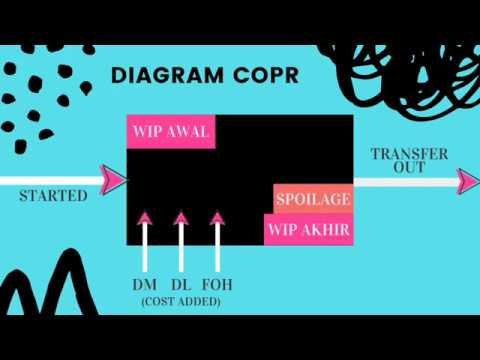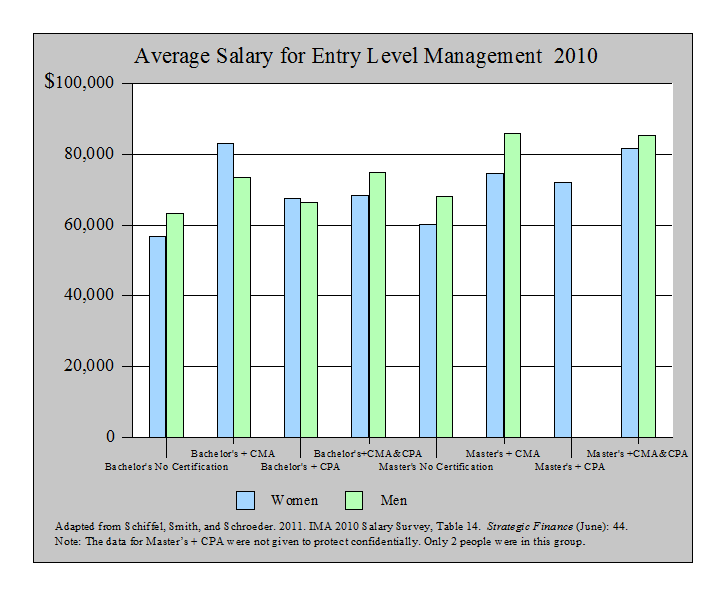
Treasury Lockbox processing is accomplished by Treasury designated financial agents that provide lockbox and remittance services to the Treasury on behalf of federal entities. The financial agents are strategically located to minimize mail, processing, and collection float. Box (lockbox) established by the financial agent to collect federal entity mail for processing. The lockbox accelerates the deposit of funds into the Treasury’s account and provides secure, accurate, and efficient data capture of financial and remittance data.
An agency records disbursements and collections resulting from pre-1992 direct loan obligations and loan guarantee commitments in the liquidating account TAS. Credit Reform did not change the treatment of transactions for pre-1992 direct loans and loan guarantees. When the government modifies a pre-1992 loan guarantee, the loan guarantee becomes subject to credit reform accounting. The agency transfers the guarantee liability from the liquidating account to the financing account. It makes a one-time adjusting payment from the liquidating account TAS to the financing account TAS to acquire the guarantee liability.
Credit Reform Accounts
Federal agencies without specific statutory authority to hold public money outside of the U.S. Treasury using one of the various mechanisms established by the Department of the Treasury, including, but not limited to, the Treasury General Account Network (TGA Network), General Lockbox Network, and Pay.gov. Please refer to Volume I, Part 5, Chapter 2000, Depositing Domestic Checks and Cash Received in Over the Counter Collections, which provides instructions for federal agencies to deposit domestic checks and cash.
It is the responsibility of the Federal Program Agency for a Government Investment Account to evaluate continuously the disbursement needs of the federal program financed through the Government Investment Account. The Federal Program Agency should practice an investment strategy to satisfactorily meet the program’s disbursement needs through the automatic redemption of GAS Securities on the Maturity Dates. The Federal Program Agency may instruct Fiscal Service to redeem one or more GAS Securities held in the Government Investment Account before the Maturity Date(s) if the program has immediate cash needs (cash needs arising within 60 calendar days of the redemption). The Federal Program Agency may not instruct Fiscal Service to redeem one or more GAS Securities held in the Government Investment Account before the Maturity Date(s) if the program does not have immediate cash needs. It is the responsibility of the Federal Program Agency to determine the amount of GAS Securities held in the Government Investment Account scheduled for redemption before the Maturity Dates.
However, if Fiscal Service is unable to process a timely received instruction on a particular date due to a temporary business closure of its office, Fiscal Service will process the transaction so that it is effective as of the date during the closure as instructed by the Federal Program Agency. It is the responsibility of the Federal Program Agency to notify Fiscal Service of any legislation that includes an appropriation for its federal program and to submit a letter to Fiscal Service requesting an appropriation Warrant and citing the legal authority. TFM Volume I Part 2 Chapter 2000 includes the contact information of the branch within Fiscal Service to which Federal Program Agencies should send requests for appropriation Warrants. For help in determining the amounts and/or timing of an appropriation and when necessary, contact OMB and/or Fiscal Service’s Office of the Chief Counsel. Only disagreement between Fiscal Service, OMB, and the Federal Program Agency requires such coordinated determination.
Requirements For Using Depositaries To Hold Public Money
Agencies should send requests for guidance to Fiscal Service’s Bank Policy and Oversight Division (see Contacts). Agencies must provide Fiscal Service with written notice of any subsequent changes to the statutory basis of any request for which Fiscal Service provided guidance. The Federal Program Agency may not instruct Fiscal Service to redeem Treasury Specials before the Maturity Date for the purpose of reinvesting in higher rate instruments. ODM determines daily the purchase Prices for all outstanding, eligible Marketable Treasury Securities in accordance with the principles described in Appendix 1.
If an agency has insufficient funds to make an annual interest payment to Treasury at year-end, it should initiate an additional borrowing effective the last business day of the fiscal year to make the interest payment. Also, reconciling intra-governmental transactions is the responsibility of Federal Program Agencies. OMB and Treasury require agencies that invest through Fiscal Service to reconcile elements of their investments, including principal, original Discount and Premium, amortization of Discount and Premium, and interest revenue.
The Electronic Code of Federal Regulations
Treasury and the Federal Program Agency for a particular Government Investment Account may agree to supplement or supersede the provisions of this chapter by means of a written Memorandum of Understanding (MOU) between Treasury and the Federal Program Agency. Anywhere that federal statute or an MOU directly conflicts with this chapter, the statute or MOU will prevail. (b) Submitter means any person or entity, including a corporation, State, or foreign government, but not including another Federal Government entity, that provides confidential commercial information, either directly or indirectly to the Federal Government. (a) Confidential commercial information means commercial or financial information obtained by GSA from a submitter that may be protected from disclosure under Exemption 4 of the FOIA, 5 U.S.C. 552(b)(4). The Code of Federal Regulations (CFR) is the official legal print publication containing the codification of the general and permanent rules published in the Federal Register by the departments and agencies of the Federal Government. The Electronic Code of Federal Regulations (eCFR) is a continuously updated online version of the CFR.
Certain statutes appropriate general revenues from the General Fund of the Treasury for deposit into special accounts established on the books of the Treasury by the statutes. These special accounts generally serve as accounting devices for tracking the receipts and disbursements of the federal programs authorized by the statutes. Treasury will review the annual appropriation acts and any supplemental appropriation act enacted by Congress to determine funding requirements approved by Congress.
If a request for a lockbox is approved, Fiscal Service offers a standard suite of lockbox services at no charge to the federal entity. The process of setting up or converting to a paper lockbox begins with the federal entity review of the standard general specifications for all lockbox services, or the model SRS. Working in collaboration with Fiscal Service, the federal entity shall fill in detailed federal entity specifications where required. If volumes drop too low, Fiscal Service reserves the right to close a lockbox or move it to an electronic collection service.
Part 2: Central Accounting and Reporting
The agency records all subsequent cashflows related to the loan guarantee in the financing account TAS. Agencies may borrow funds to meet default claims in excess of the loan guarantee financing account’s cash balance, negative subsidy in advance of expected collections from the public, or downward subsidy reestimates. The financing account borrows to finance the unsubsidized balance of the loan disbursement to non-federal borrowers. Agencies may borrow funds in advance of expected collections for the negative subsidy amount. The program account receives either a current definite, current indefinite, or permanent indefinite appropriation by warrant that provides budget authority to pay administrative expenses and subsidy costs. When a direct loan or guaranteed loan is disbursed or executes a positive subsidy modification or upward reestimate, the program account pays a subsidy to that financing account.
Federal Program Agencies may only invest monies when they have been credited to the Treasury general fund and are available to Treasury. However, Federal Program Agencies may invest deposit funds if the funds are not available to Treasury. It is the responsibility of the Federal Program Agency to specify, via FedInvest, the amount of monies to be invested, the date on which the monies are to be invested, and the particular GAS Security(s) in which the monies are to be invested. If the Federal Program Agency does not identify its preference, and there are both a STRIPS principal and interest component having the Maturity Date requested, then Treasury will purchase for the program account the STRIPS component having the lower yield. Treasury reserves the right to reject requests to invest in a GAS Security zero-coupon bond if, in Treasury’s opinion, there is an insufficient number of reliable market quotations for the requested securities. Federal Program Agencies may not instruct Fiscal Service to invest in more than five GAS Security zero-coupon bonds on any one Business Day.
- The agency records all subsequent cashflows related to the loan in the financing account TAS.
- (4) The designation made by the submitter under paragraph (c) of this section appears obviously frivolous.
- Generally, the Federal Program Agency should select GAS Securities in principal amounts and having Maturity Dates or interest payments that are consistent with the investment strategy that the Federal Program Agency developed for the account.
- Fiscal Service will offer additional amounts of a GAS Security zero-coupon bond provided the time remaining to the Maturity Date and minimum incremental face amount requirements are met at the time the additional amount is purchased.
If the Federal Program Agency’s investment authority allows for certain investments subject to a public interest determination of the Secretary of the Treasury, such determination will be at the sole discretion of the Secretary. The Secretary will also consider, among other variables, the interest of taxpayers generally and the effects on the U.S. economy. Federal Program Agencies may instruct Fiscal Service to invest in GAS Security zero-coupon bonds. Fiscal Service will issue a GAS Security zero-coupon bond that is identical (except for transferability) to the selected marketable Treasury STRIPS interest or principal component in terms of Maturity Date. The initial purchase of any GAS Security zero-coupon bond must be in face amounts of at least $50 million, or in increments of $1 million face amount above $50 million.
An agency needing to borrow from the Secretary of the Treasury must first contact a member of Fiscal Service’s Federal Investments and Borrowings Branch (FIBB) to establish a loan agreement (see contacts). Quarterly, it is the responsibility of the Federal Program Agency for a Government Investment Account to use GTAS to reconcile and confirm account balances. If agencies have questions regarding reconciling intra-governmental transactions, they may contact the Federal Investments and Borrowings Branch (see contacts). It is the responsibility of the Federal Program Agency to specify the GAS Securities that are to be redeemed and the amount needed, or face amount of GAS Securities that are to be redeemed and the date on which the GAS Securities are to be redeemed. It is also the responsibility of the Federal Program Agency to ensure that the person submitting the redemption instruction is an official of the Federal Program Agency who is authorized to submit to Fiscal Service redemption instructions on behalf of the Federal Program Agency.
Most agencies recalculate the weighted average interest rate or single effective rate only after disbursement of 90 percent of the dollar volume of direct or guaranteed loans. However, at the end of any fiscal year during a disbursement, the agency may recalculate the weighted average interest rate or single effective rate. Fiscal Service will redeem GAS Securities held in a Government Investment Account, before the Maturity Dates, pursuant to redemption instructions received by Fiscal Service from the Federal Program Agency for the account. The required method for Federal Program Agencies to submit redemption instructions is through FedInvest.

If the government securities market is open on a federal holiday, Fiscal Service will be open to receive investment instructions from those Federal Program Agencies that are open and desire to invest funds. Federal Program Agencies desiring to invest funds on such days will follow the same operating procedures and deadlines unless notified otherwise by Fiscal Service. At times, Congress authorizes or requires by law a movement of monies from one government account to another. Because such a transfer does not have an impact on the federal budget surplus or deficit and does not involve an Outlay of funds from the transferring account, the transfer is referred to as a Non-Expenditure Transfer (NET). It is the responsibility of the Federal Program Agency for the transferring account to use the CARS Agency Transaction Module (ATM) NET application to process NET transactions.
The IRS Lockbox Network handles business master file (BMF) and individual master file (IMF) tax transactions. The financial agents process the tax receipts and transmit information to IRS service centers. The financial agents also send to IRS the original tax forms that accompanied the transactions. (2) The notice shall either describe the commercial information requested or include a copy of the requested records or portions of records containing the information.
If the estimated subsidy is negative, the agency pays an amount equal to the negative subsidy from the financing account TAS to a general fund receipt TAS (AID 27XX.001) for that program when the non-federal lender disburses the guaranteed loan. If a subsidy reestimate for a cohort is downward, the agency records the amount of the reestimate and interest on the reestimate I TFM PART 5 CHAPTER 4600 and pays an amount equal to the downward reestimate and interest on the reestimate to a different general fund receipt TAS (AID 27XX.003). If the estimated subsidy is negative, the agency pays an amount equal to the negative subsidy from the financing account TAS to a general fund receipt TAS (AID 27XX.001) for that program when the direct loan is disbursed.
Fiscal Service provides Federal Program Agencies with updated data monthly about the fund balance the Federal Program Agency maintains in the Treasury through the “GWA Account Statement” within CARS. After Fiscal Service has assigned a Subclass code to a new TAS, Fiscal Service will prepare and send to the Federal Program Agency a notice communicating the Subclass code for the account.
Federal Program Agencies should refer to TFM Volume I Part 2 Chapter 2000 for directions on how to complete and submit a NET. If the Federal Program Agency for a Government Investment Account requests Treasury to invest any monies in the account, the Federal Program Agency should segregate investment transactions from the normal receipt and expenditure transactions of the account in CARS. It is the responsibility of the Federal Program Agency in such circumstances to request Fiscal Service to assign a Subclass code to the TAS for the Government Investment Account to capture the investment data beyond the fund level. To report special transactions such as investments, Federal Program Agencies should use specialized Business Event Type Codes (BETCs) and/or subclass codes.
